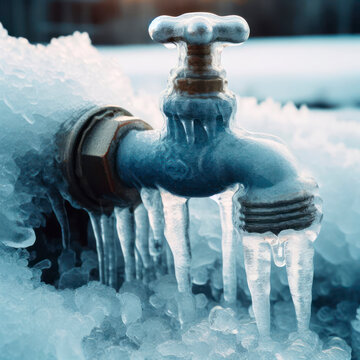Ways to Defend Your Pipes from Freezing: Specialist Guidance
Ways to Defend Your Pipes from Freezing: Specialist Guidance
Blog Article
This great article listed below on the subject of How To Avoid Freezing Pipes is quite insightful. Read it for yourself and see what you think about it.

Cold weather can wreak havoc on your pipes, particularly by freezing pipelines. Here's just how to avoid it from taking place and what to do if it does.
Introduction
As temperatures drop, the risk of icy pipelines increases, potentially leading to costly repair work and water damages. Recognizing how to prevent frozen pipelines is critical for home owners in chilly environments.
Prevention Tips
Insulating prone pipes
Cover pipes in insulation sleeves or make use of warm tape to protect them from freezing temperature levels. Focus on pipes in unheated or outside locations of the home.
Heating strategies
Keep indoor areas effectively heated, particularly locations with pipes. Open up closet doors to allow warm air to distribute around pipelines under sinks.
Exactly how to recognize icy pipelines
Seek lowered water circulation from taps, unusual smells or sounds from pipelines, and visible frost on revealed pipes.
Long-Term Solutions
Structural adjustments
Take into consideration rerouting pipelines away from outside wall surfaces or unheated areas. Include added insulation to attics, cellars, and crawl spaces.
Upgrading insulation
Buy high-grade insulation for pipes, attics, and wall surfaces. Proper insulation aids maintain regular temperatures and decreases the danger of frozen pipes.
Safeguarding Outdoor Plumbing
Yard hoses and exterior faucets
Detach and drain garden hoses before winter season. Mount frost-proof faucets or cover outside faucets with shielded caps.
Recognizing Frozen Pipes
What causes pipes to ice up?
Pipes ice up when subjected to temperature levels below 32 ° F (0 ° C) for expanded periods. As water inside the pipelines freezes, it broadens, taxing the pipe wall surfaces and possibly triggering them to break.
Risks and damages
Icy pipes can bring about supply of water disturbances, residential property damages, and costly repair services. Ruptured pipes can flood homes and cause substantial architectural damages.
Indicators of Frozen Piping
Recognizing icy pipelines early can stop them from breaking.
What to Do If Your Pipelines Freeze
Immediate actions to take
If you presume icy pipes, keep taps open up to eliminate stress as the ice melts. Use a hairdryer or towels soaked in warm water to thaw pipes gradually.
Verdict
Avoiding frozen pipelines calls for proactive steps and fast reactions. By comprehending the reasons, indications, and preventive measures, house owners can secure their pipes throughout cold weather.
5 Ways to Prevent Frozen Pipes
Drain Outdoor Faucets and Disconnect Hoses
First, close the shut-off valve that controls the flow of water in the pipe to your outdoor faucet. Then, head outside to disconnect and drain your hose and open the outdoor faucet to allow the water to completely drain out of the line. Turn off the faucet when done. Finally, head back to the shut-off valve and drain the remaining water inside the pipe into a bucket or container. Additionally, if you have a home irrigation system, you should consider hiring an expert to clear the system of water each year.
Insulate Pipes
One of the best and most cost-effective methods for preventing frozen water pipes is to wrap your pipes with insulation. This is especially important for areas in your home that aren’t exposed to heat, such as an attic. We suggest using foam sleeves, which can typically be found at your local hardware store.
Keep Heat Running at 65
Your pipes are located inside your walls, and the temperature there is much colder than the rest of the house. To prevent your pipes from freezing, The Insurance Information Institute suggests that you keep your home heated to at least 65 degrees, even when traveling. You may want to invest in smart devices that can keep an eye on the temperature in your home while you’re away.
Leave Water Dripping
Moving water — even a small trickle — can prevent ice from forming inside your pipes. When freezing temps are imminent, start a drip of water from all faucets that serve exposed pipes. Leaving a few faucets running will also help relieve pressure inside the pipes and help prevent a rupture if the water inside freezes.
Open Cupboard Doors
Warm your kitchen and bathroom pipes by opening cupboards and vanities. You should also leave your interior doors ajar to help warm air circulate evenly throughout your home.

Do you really like reading about Prevent Frozen Pipes ? Give feedback further down. We would be happy to see your opinions about this post. In hopes that you come back again before long. Enjoyed our post? Please quickly share it. Help someone else discover it. Thanks so much for going through it.
Click For More Information Report this page